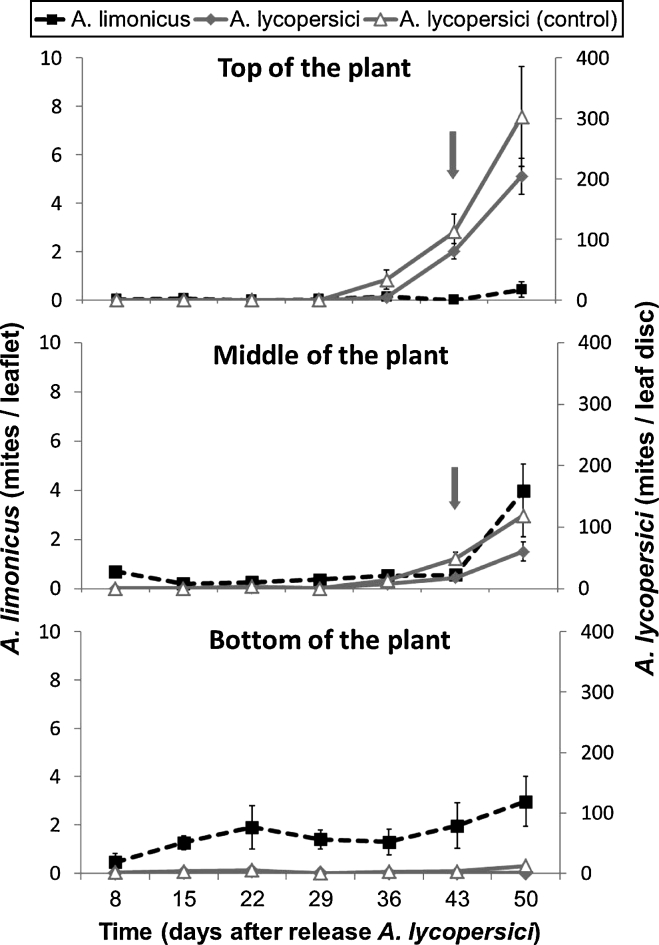Fig. 1.
Population dynamics of tomato russet mites (grey diamonds) and predatory mites (Amblydromalus limonicus; black squares) and of tomato russet mites (Aculops lycopersici; open grey triangles) in absence of predators in three different strata (top, middle, bottom) of tomato plants over a period of 7 week. 5 leaf discs, each with 280 tomato russet mites, were placed on leaf 3–7 on day 0. Six days later, 140 predatory mites (all mobile stages) were randomly distributed over leaf 3–7. Means are shown as points (triangles, diamonds, squares) and associated vertical bars represent SE. Each of the two treatments was replicated three times. The vertical arrows indicate the approximate time period in which glandular hair fall-over takes place on the stems. Differences in TRM population at the last sampling date between plants with and without predators did not test significantly different using the two-sample-test (see “Results” section)

